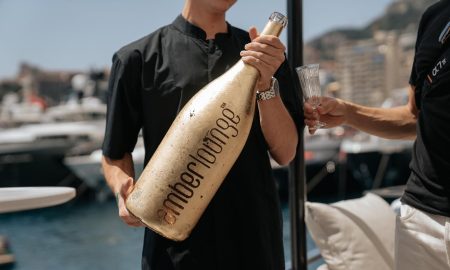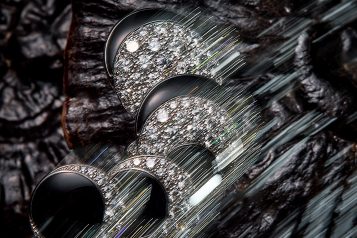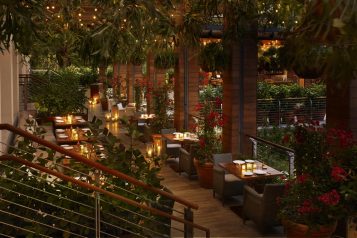Scotland occupies a one-of-a-kind place in the imagination. It is a fairytale land of castles, picture-perfect fishing villages, and dramatic coastlines. Nowhere is more iconic of “classic Scotland” than the Highlands. Walking through its misty green hills and cow-studded countryside, it is easy to forget what century it is, save for the occasional Range Rover winding its way down a narrow highway.
Built in 1700, the grounds and distillery of The Macallan Estate—located in the Scottish Highlands town of Speyside—are as steeped in history as the whisky-making process itself. Handed down through generations, the first distillery was established on the farm in the early 1800s. The prevalence of barley and pure spring water on some 370 acres of rich farmland lent itself perfectly to the cultivation of whisky, and The Macallan single malt earned its reputation for distinction as early as 1847. The beauty of the manor and its rolling hills overlooking the River Spey make it a popular stop for Scotch enthusiasts—including some bold-faced names. In fact, during our tour of the estate, we missed renowned author Gore Vidal by a matter of minutes.
In order to highlight the attributes that make Macallan so special, Malts Director Ken Grier has developed a rubric called the Six Pillars, which he explained over a lavish six-course dinner of locally grown specialties. Using his natural flair for showmanship, he tied one pillar to each course for a truly memorable experience.
The First Pillar is “the Spiritual Home,” which is the aforementioned manor. Overlooking the distillery, the historical property is an immutable reminder of the whisky’s beginnings. The Second Pillar is “Curiously Small Stills,” as Macallan is distilled in copper stills that are smaller than other Speyside distillers, accounting for the rich, fruity, and full-bodied flavor of the spirit. The Third Pillar is what’s known as “the Finest Cut,” a designation that represents the amount of distilled spirit that is transferred to barrels for maturation. At Macallan, only the finest 16 percent is used, one of the smallest percentages of any distillery. The Fourth Pillar speaks to the “Exceptional Oak Casks,” as the provenance of the cask is the most important influence in the whisky’s ultimate flavoring. Macallan uses hand-crafted oak casks from Spain, previously used for sherry, or hand-picked American oak casks.
Surprisingly, a lot of distilleries add caramel color to give whisky its rich amber hue, but Macallan’s Fifth Pillar is “the Natural Color.” Macallan relies only on the aging process, which accounts for a range of colors that vary from year to year. The final pillar is “the Peerless Spirit,” which refers to the picking of certain vintages as “mature.” This requires a skilled nose and peerless knowledge of whisky.
If the Macallan brand DNA has a magical quality to it, then whisky “nose” Bob Dalgarno must be considered the company’s alchemist. Each barrel of Macallan whisky is required to pass his muster in order to clear for eventual bottling. How Dalgarno became the distillery’s chief evaluator is a serendipitous story. Though Dalgarno was originally hired to work in production, Grier routinely conducts “nose aptitude” tests on Macallan employees, in the hopes that he will discover scent-sensitive prodigies from among the company’s ranks. With Dalgarno, he struck gold. Watching him in action is a crash course in the complexity of whisky. “Floral top notes, some orange citrus below, and a bit of chocolate at the finish,” he says while nosing one straight-from-the-cask vintage to which a small amount of water had been added. (Despite what some people think, it is generally agreed that adding a splash—or more—of water “opens up” the single malts and adds to their complexity.) Sure enough, the flavors Dalgarno notes are all right there; once they are identified, even an untrained nose has little trouble picking them up.
Like Macallan, Lalique is a company with a strong sense of history and a product that is inextricably linked to the region, or terroir as the French would say. Rene Lalique chose the small town of Wingen-sur-Moden to house his crystal-making facility for specific reasons; for one, he needed plenty of forested land to keep the furnaces burning, and the densely wooded town near the Franco-German border provided just that. Secondly, Alsace has a history of producing glassmaking artisans that predates the opening of the Lalique factory. Today, the glassblowers, molders and sculptors at Lalique continue to produce objets d’art using methods that have changed little in over a century.





















